London is one of my favourite cities in the world.
But it wasn’t always that way.
The first time I immersed myself in Britain’s capital as a naïve, bright-eyed 20-year-old, it was intensely overwhelming. Nothing like I had experienced before. It was mid-2001, and it was my first solo overseas trip.
But over subsequent visits, London started to grow on me. And that affection has blossomed into a profound love.
Now I want to help inspire and equip you for your first time visiting London – to avoid the common pitfalls, misunderstandings, and frustrations of dealing with a culture that might be quite different from your home. With my practical advice, you’ll experience one of the world’s greatest cities like a savvy traveller.
I’ve covered everything from transport and attractions to insider tips. All you need to do is book the flight.
And after your first time in London, you’ll come to the same realisation as me… that once is never enough.
Essential reading: If your trip to London will be part of a longer trip around Europe, take a look at my extensive guide on how to plan a trip to Europe.
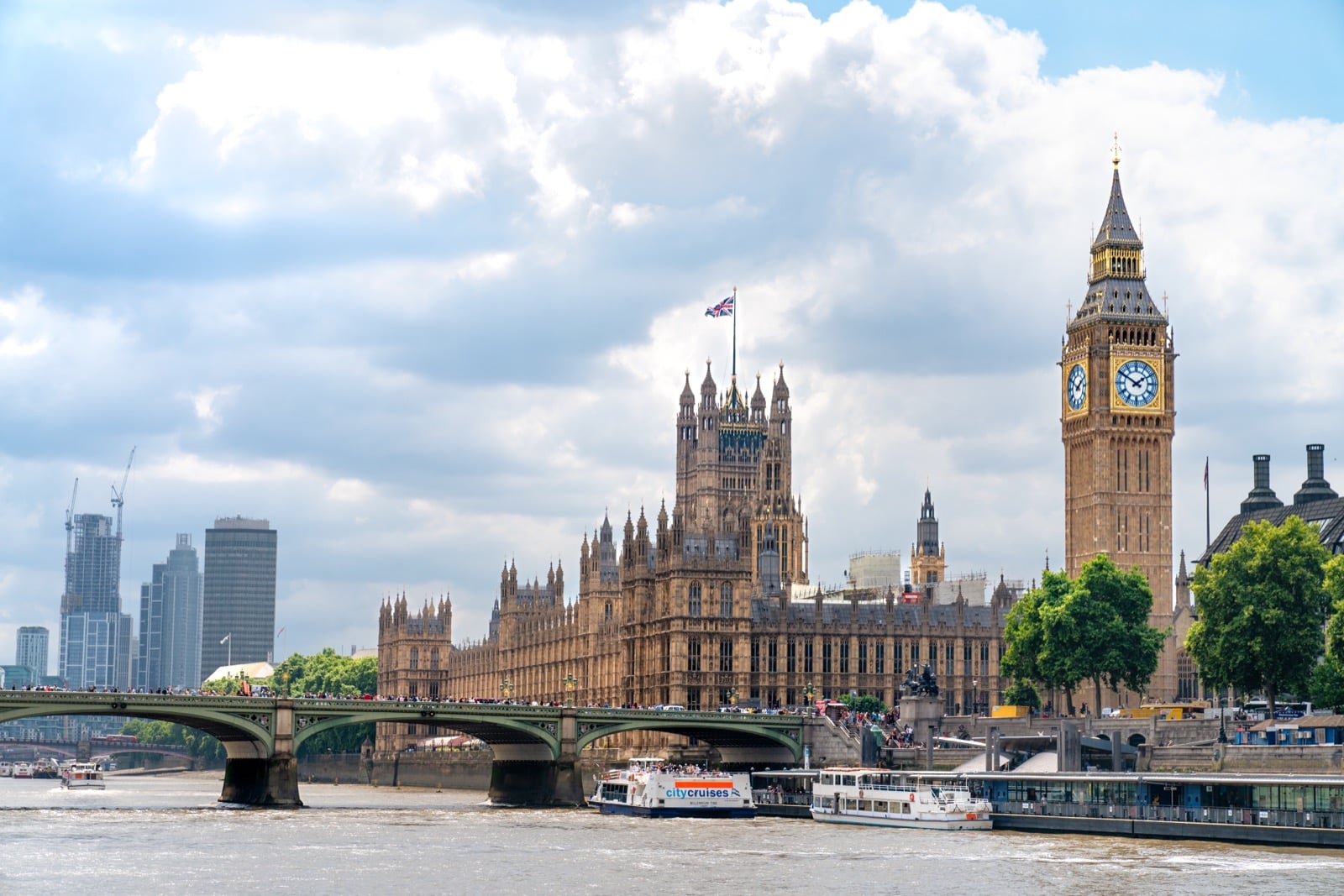
How To Save Money in London
I discovered on my latest trip that the post-pandemic United Kingdom is not what it used to be. Peak season accommodation costs have gone through the roof, and inflation has hurt the hip pocket. So here are my essential tips to save money:
Turbopass London City Pass
This is my starting point for saving money. The longer you stay in London (up to 7 days), the better value this essential card becomes. Get free access to a hop-on-hop-off bus tour, Thames river boat cruise, The View from The Shard, and Brit Movie Tours guided walking tour.
The walking tour and entry to The Shard require an advance timeslot reservation, and instructions are provided with the London City Pass. I previously did the Harry Potter tour, which was a lot of fun.
Once purchased online, the e-tickets will be sent to you via email instantly, and physical public transport tickets (valued up to £40, depending on pass length) are shipped to an address of your choosing. Save a copy of the PDF e-tickets on your phone for easy access.
Note: the Turbopass is valid for consecutive calendar days. So if you use it for the first time at 5pm on Tuesday, that counts as your first day, with Wednesday being the second. So plan your itinerary to make the most use of the city pass.
Use Public Transport
Unless you’re travelling in a large group, public transport is the cheapest way to get around in London.
London’s bus, rail, and ferry networks cover pretty much anywhere you would want to go. The underground train (“tube”) runs so regularly that you don’t have to bother checking schedules. And the longest I ever waited for a bus was 10 minutes.
Reloadable public transport cards called “Oyster Cards” are included with the Turbopass. If needed, recharge at self-service machines in tube and train stations (with cash or card payments). Note: the usual £5 Oyster Card activation fee is included with the Turbopass booking.
One of the best features of the pay-as-you-go Oyster Card is the “daily cap price”. It means once you reach a limit, you won’t be charged anymore – so all future rides that day are free! The “day” starts at 4:30am (and finishes at 4:29am the next day). The cap limit depends on the number of zones you travel in a day:
- Zones 1-2: £7.40
- Zones 1-3: £8.70
- Zones 1-4: £10.60
- Zones 1-5: £12.70
- Zones 1-6: £13.50
The majority of tourist sites around London are in zones 1 and 2. The exceptions would be trips to the airports (Heathrow and Gatwick), which are fixed prices, and the Heathrow Express is not counted in the cap (see below).
Tips: A special daily cap of £4.65 applies for bus travel only. And children under 11 travel free with a paying adult.

Don’t Use Cash
If your home bank charges a fee for withdrawing cash in a foreign country, don’t worry. You can get along just fine in London with zero cash. Card payments are accepted everywhere – from public transport to supermarkets to food trucks. If your home bank charges high foreign transaction fees, consider the Wise debit card.
Supermarkets are Your Friend
Sainsbury’s Local and Tesco Express are smaller supermarkets jam-packed with a wide range of decently-priced ingredients, snacks, and ready-to-go meals for breakfast, lunch, or dinner. There’s a solid selection of vegan-friendly and gluten-free options. These markets will help keep your budget in check.
Free Museums
A significant number of public museums in London offer completely free entry.
Yes, free, as in free beer.
These include National Gallery London, Victoria and Albert Museum, and the British Museum. Check the respective museum websites if an advance booking is required, such as The Queen’s House London, National Maritime Museum, Tate Modern, Science Museum London, and St Martin in the Fields.
Free Self-Guided Tours
If you’ve got time to stroll and prefer to do things on your own, download the MP3s and PDFs for Rick Steve’s free audio guide tours. He covers 5 separate walks: Westminster, British Museum, British Library, St Paul’s Cathedral, and Historic London City.
Getting Around London
Walking. London is a very pedestrian-friendly city. Footpaths are in good condition, and the city centre is flat with ample clear signage. You’ll likely clock upwards of 15,000 steps per day while sightseeing, so wear comfortable walking shoes and thick socks (these are my recommended socks).

Public Transport. While the spaghetti-resembling underground train network (called the “tube”) might look intimidating at first glance, it is pretty easy to use once you get the hang of it. Each line is colour-coded, and signage at tube stations is clear and consistent. Be aware that there’s a separate “above ground” train network seamlessly intertwining with the tube network. For all intents and purposes, as a tourist, it’s one giant network.
Tip: Download and print a copy of the PDF tube map as a backup in case your phone goes flat.
The new Elizabeth Line (purple) is modern and comfortable – the fastest way to get from the west to the east side of London (and vice versa). Older tube stations may not have escalators or lifts, so check the tube map for wheelchair icons that indicate step-free access if you need it
In addition to Oyster Cards, you can also now use your regular debit card too. Just tap in when entering a tube station and tap again when exiting. Buses only need to be tapped once on entry because they are a flat price.
Bus stops are clearly indicated with consistent signage that shows the line, direction, stations along the line, and schedule. While catching a bus is easy, be aware that many London bus drivers are not particularly patient – they must maintain a strict schedule. Embark and disembark quickly.
To help you navigate London, download the free Citymapper app (iOS, Android). It’s better than Google Maps and offers live updates on public transport schedules.
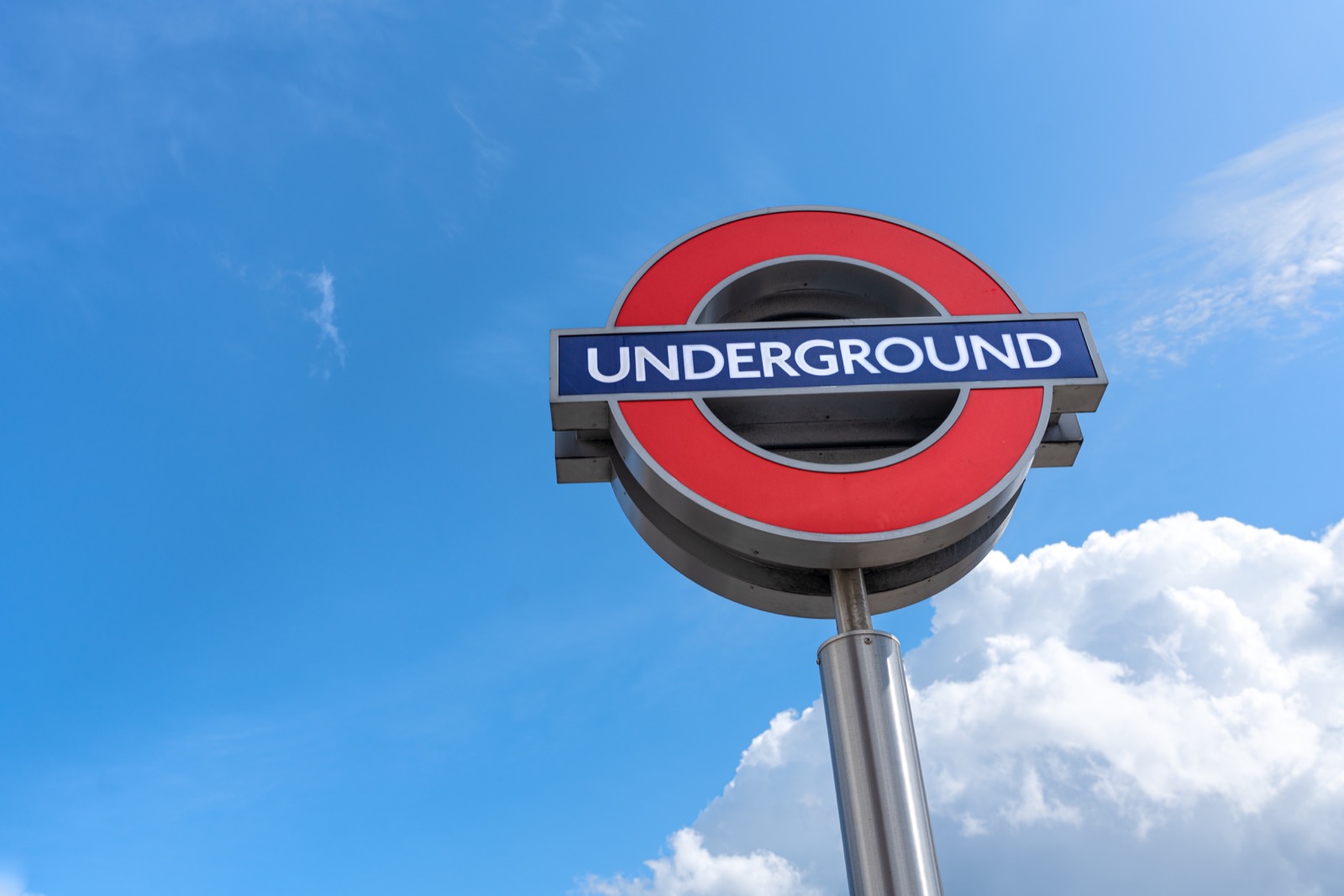
Taxis & Rideshare. These are plentiful but fairly expensive for a tourist. Uber was famously given the boot from London a few years ago. So now the best e-hailing apps are: Bolt, FreeNow, Ola, Gett, and Taxiapp.
Driving. Just don’t do it. It’s not worth it. Parking in London is a hassle and expensive. There’s an inner city congestion charge which is very pricy (£15 per day). I got stung with it by accident on a previous trip and ended up paying a late penalty because I didn’t realise I had been charged. If you’re driving out of the city on a road trip, dodge the congestion zone.
If you’re flying into (or out of) Heathrow, there are 3 (slightly confusing) different train options:
- Piccadilly Tube Line: the cheapest and slowest option. Travel time to the city centre (Leister Square station) is 47 minutes, and trains run regularly throughout the day, stopping at all stations along the way. The longest you’ll wait for a train is 10 minutes. Space can be cramped in these cabins, especially if you have a lot of luggage, or during peak times. All 3 Heathrow stations (Terminal 2/3, 4, 5) are within “Zone 6”, and priced accordingly.
- Elizabeth Train Line: This service replaces the former “Heathrow Connect” service (as of May 2018). Opened in May 2022, this ultra-modern line cuts travel time to London Paddington Station down to 22 minutes. A premium is charged for tickets to/from Heathrow – about twice the price of the Piccadilly line. Step-free access is well-suited for travellers with mobility issues and parents with prams.
- Heathrow Express trains: the fastest and most expensive option. Travel time to the city centre (London Paddington station) is 16 minutes, and runs frequently, non-stop. From Paddington, you can catch the tube to other parts of London. Cabins are spacious and modern. This is a private company, separate from the TfL-operated tube and above-ground train networks. Ticket prices are normally around £25 (peak), but vary depending on how far you book in advance – up to 75% saving for 90 days in advance. Buy tickets online.
I recommend option 1 for most travellers, or option 2 if you’re in a rush. Oyster Cards are supported for each of the above trains.
Tip: Keep an eye on which Heathrow terminal you’re arriving in, because there are different tube/train stations for each. Allow yourself plenty of time to get through Heathrow because it’s a big beast.
For Gatwick Airport, there’s the Gatwick Express which is a flat fee of £19.90 and runs to Victoria Station in 33 minutes (with only 2 stops). Tickets can be purchased on arrival at a self-service vending machine or use the Oyster Card. You can save 10% by booking flexible tickets online, and return tickets are even cheaper. If you have 4 or more people in your travel group a taxi will be cheaper (about £56, taking 1 hour).
Essential Tours in London for a First-Time Visitor
London in a Day Tour
If you only do 1 guided tour in London, this should be it. It’s a mammoth 7 hours of back-to-back highlights – Houses of Parliament, Westminster Abbey, Changing of the Guard and Buckingham Palace, Trafalgar Square, Thames River Cruise, and Tower of London, including the Crown Jewels. We also saw (from a distance) St James’s Palace, Big Ben, London Eye, Tower Bridge, St Paul’s Cathedral, and The Shard.
Our small group was led by the wonderfully charming Nick, who has 20 years of experience as a guide. Speaking through wireless headsets, Nick brought the history of London to life with vivid stories and humorous anecdotes. He masterfully balanced enough historical and cultural background without getting bogged down in too much detail, keeping each guest engaged.
The tour included skip-the-line access to Westminster Abbey, and the Tower of London, so there were never any “dead spots” in the tour – it was full-steam all the way. We had a 75-minute break for lunch at our leisure and picked a nearby restaurant. Nick was able to tweak the schedule slightly, depending on feedback from guests. Be prepared to walk a lot, but trust me, it’s worth every minute.
Tip: As of October 2020, you can take photos inside Westminster Abbey.
Read more about the best walking tours in London.
Essential Things To Do in London for a First-Time Visitor
Musical Theatre
An art form that heralds from ancient Greece has been mastered to perfection in London's West End. You can’t visit London for the first time without experiencing a world-class musical theatre performance.
I recently experienced Back to the Future – The Musical at Adelphi Theatre. The iconic story was brought to the stage by the duo behind the original movies – Bob Gale and Robert Zemeckis – along with Alan Silvestri and Glen Ballard contributing music and lyrics. Add to the mix a well-selected cast, tack-sharp orchestra, and experienced creative and technical teams, and it was a winning combination.
The riveting storyline, addictive songs, and state-of-the-art lighting and effects had me glued to my chair – not daring to look away, even for a second. I left the theatre at the end of the performance with my jaw on the floor. It was a thrilling night I’ll never forget.

Tower of London
This historic seat of power for England’s monarchy for almost 1000 years, houses more stories than you could hear in an entire year. Built by William the Conqueror in 1066 AD, the fortified complex now houses the famous Crown Jewels. Yeoman Warders in unmissable red and dark blue uniforms patrol the grounds and, if you ask nicely, may pose with you for a photo (although it’s not guaranteed).
Fun fact: At least 6 ravens are kept at the Tower at all times, based on a prophecy that when they leave, the kingdom will fall.

Tower Bridge
One of the most iconic bridges in the world. Even though it looks like it’s been spanning the Thames river for centuries, it was only completed in 1894 – that’s relatively “new” in London terms. It’s best viewed from the Thames south bank, but if you want to climb to the glass-bottomed walkway spanning the two towers, tickets can be purchased online.

Buckingham Palace
The British monarch’s official residence is a must-see on your first trip to London. The Changing of the Guard occurs at 10:45am, leaving the nearby barracks at 10:57am. Between June-July, this occurs daily, and from August-May on Monday, Wednesday, Friday, and Sunday.
Tip: Take a close look at the impressive Victoria Memorial in front of the palace – it’s a grand monument, topped with a gilt bronze statue of Winged Victory, dedicated to Queen Victoria.

Tip: While you’re in the area, take a stroll through St James’s Park eastward, towards the Horse Guards Building, where you can freely see horse-mounted guards. Don’t get too close to the horses when you pose for photos.
Thames River Cruise
A free sightseeing cruise down the Thames River is included in the Turbopass London City Pass, and also part of the Walks tour. Starting from Westminster Pier, this one-way trip ends near the Tower of London. Our trip was conducted by a comical guide who pretended it wasn’t his job to do the live commentary. A clever way to earn extra tips at the end!

Houses of Parliament (Palace of Westminster)
This is one of the most beautiful seats of government in the world - a neo-gothic work of art. The best free vantage point of this architectural marvel is from the opposite side of the Thames river. The only way to get inside is with a fully guided tour which I highly recommend.
Elizabeth Tower (Big Ben)
This 96-meter tower (316 feet) is probably the most recognisable icon of England. Big Ben is a misnomer as that name is only designated to the grand 13.7-tonne bell within the tower, which was dedicated to Queen Elizabeth II in 2012 (previously called the functional-yet-accurate name, “Clock Tower”).
Westminster Abbey
The most prominent church in England and the traditional place for coronations for British monarchs. More than 3,300 people are buried here, including 16 monarchs, 8 prime ministers, poets, actors, scientists, and military leaders. You’ll find the who’s who of British society - like a morbid version of the Hollywood Walk of Fame.
The sky-high gothic vaulted ceiling and extraordinary colourful mosaics create a heavenly atmosphere, but the historical significance sends tingles up and down the spine of even the most jaded culture buffs.
London Eye
Soar 135 metres above London in one of the world’s tallest observation wheels. The view above the Houses of Parliament is matchless. Regular queues can get long, so I recommend buying fast-track tickets online.

The British Museum
Depending on your perspective on the British colonial era, this is either one of the greatest historical collections in the world… or the epitome of plundering. As a history lover, I still found all the exhibits fascinating. Collections include North America, Ancient Egypt, Ancient Greece & Rome, the Middle East, and Asia, encompassing 8 million objects spanning 2 million years (don’t worry, only 1% is on public display). Entry since 1753 has been completely free – the first national public museum of its kind.
Tip: You could spend all day in this museum and still not see it all, so it pays to have a plan and use the free map provided upon entry to target specific exhibits such as: Rosetta Stone (room 4), Ramesses the Great (room 4), Parthenon sculptures (room 18), statue from Mausoleum at Halikarnassos (room 21), Easter Island statue (room 24), Sutton Hoo ship burial (room 41), and Royal Game of Ur (room 56).

The Shard
The tallest European building reminds me of the Death Star from Star Wars. Perhaps it is the not-quite-finished look of the pinnacle. So far, it hasn’t shot any planet-destroying lasers – but I can’t say the same about the Walkie-Talkie skyscraper.
An entry ticket to the observation deck, The View from The Shard, is included with the Turbopass. However, you must reserve a time slot in advance via The Shard website (using the Turbopass code provided). You can also redeem a £3 discount on a glass of champagne at the ticket desk.
Tip: Large bags, food & drinks not allowed on the observation deck (small backpacks and bottled water are ok).
Sky Garden
Speaking of the Walkie Talkie, this is my favourite viewpoint in London. Entry is surprisingly free, but an advanced booking is required via the official website. Ticket availability is limited and only opens 3 weeks in advance.
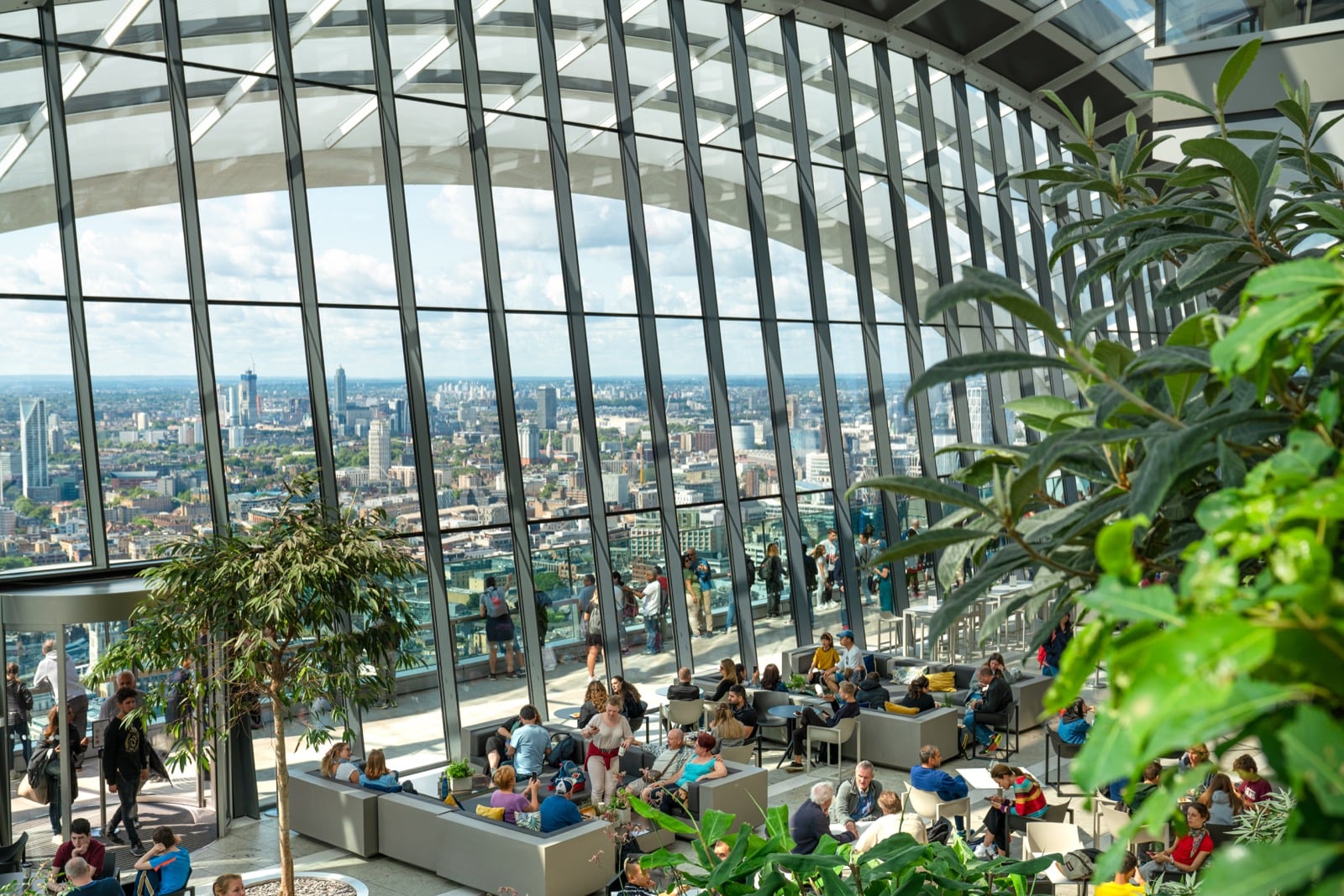
St Paul’s Cathedral
This cavernous Anglican cathedral is the seat of the Bishop of London. The original church built on this site dates back to 604 AD, but the current structure dates from the 17th century, after the previous structure was devastated by The Great Fire of 1666 AD. The baroque-style dome designed by Christopher Wren was inspired by Michelangelo’s dome of St Peter’s Basilica in the Vatican.
It’s cheaper to buy an entry ticket in advance online – this includes access to the cathedral floor, underground crypt, and panoramic view from the top of the dome (climbing required).
Tip: The best external view of the dome is from the freely accessible One New Change rooftop (across the road).

Museum of London
This is the easiest way to download London’s backstory in a few hours. Smartly-arranged museum exhibits span from pre-Roman time to the modern era. The location is conveniently close to St Paul’s Cathedral.
Victoria and Albert Museum
Nicknamed the “V&A”, this is the world’s largest museum of applied arts, decorative arts, and design – stretching over 7 miles. You could spend all day here and not see everything. The best way to plan your visit is with one of V&A’s themed trails. It’s just a few minutes' walk from 2 other popular free museums: Science Museum and The Natural History Museum.
Trafalgar Square
The most famous public square in London is protected by 4 larger-than-life bronze lion sculptures. Towering above the square is Nelson’s Column, erected in 1843 to honour the Admiral’s victory in the naval Battle of Trafalgar in 1805 against Napoleon’s forces. The northwest corner of the square contains a regularly changing contemporary artwork – keep an eye out for it. During your busy day sightseeing in London, take a few minutes to relax by the 2 fountains in the square.

King's Cross Station
Harry Potter fans will find Platform 9 ¾ for a photo op. Be warned, a lot of people will have the same idea, and the queue can be quite long.

Tate Modern
If you love modern art, this is your heaven. Even if you don’t, this cultural institution will open your mind to challenge your definition of “art”. Artwork range from the early 1900s to current times. Most exhibits are free to see, which should suffice on your first visit, but there are paid exhibits too, with tickets available near the entrance. The Tate Modern website is packed full of helpful info, including a guide on “slow looking”.

National Gallery
One of the world’s greatest collections of European art, covering over 2,300 pieces from the late 13th to early 20th centuries. Famous featured artists include Vincent van Gogh, Rembrandt, Pierre-Auguste Renoir, Claud Monet, Sandro Botticelli, Leonardo da Vinci, Michelangelo, and Raphael. If you don’t know where to start, use this guide from National Gallery to help plan your visit. And guess what? It’s free!

Millennium Bridge
This pedestrian-only steel suspension bridge, opened in June 2000, spans the Thames river. Not only will it help you walk from St Paul’s Cathedral to Tate Modern in just 12 minutes, but it’s damn beautiful! Potterheads will recognise it from the film Harry Potter and the Half-Blood Prince, when the bridge collapses after an attack from Death Eaters.

Royal Observatory Greenwich
It’s not every day you can straddle the Prime Meridian line - separating the eastern hemisphere from the western, and where time zones start. My favourite exhibits in the small museum are examples of early clock technology. The fastest way to access Greenwich from central London is the above-ground train (50 minutes), but river cruises are also available (1 hour). Buy entry tickets online.
Kensington Gardens & Palace
This gorgeous, large family-friendly park contains ponds, monuments, and playgrounds and joins with Hyde Park. Kensington Palace has been a residence of the British royal family since the 17th century. The State Rooms are open to the public, so you can get a taste of royal life and history. It’s cheaper to buy palace entry tickets online via this link than on the official website.
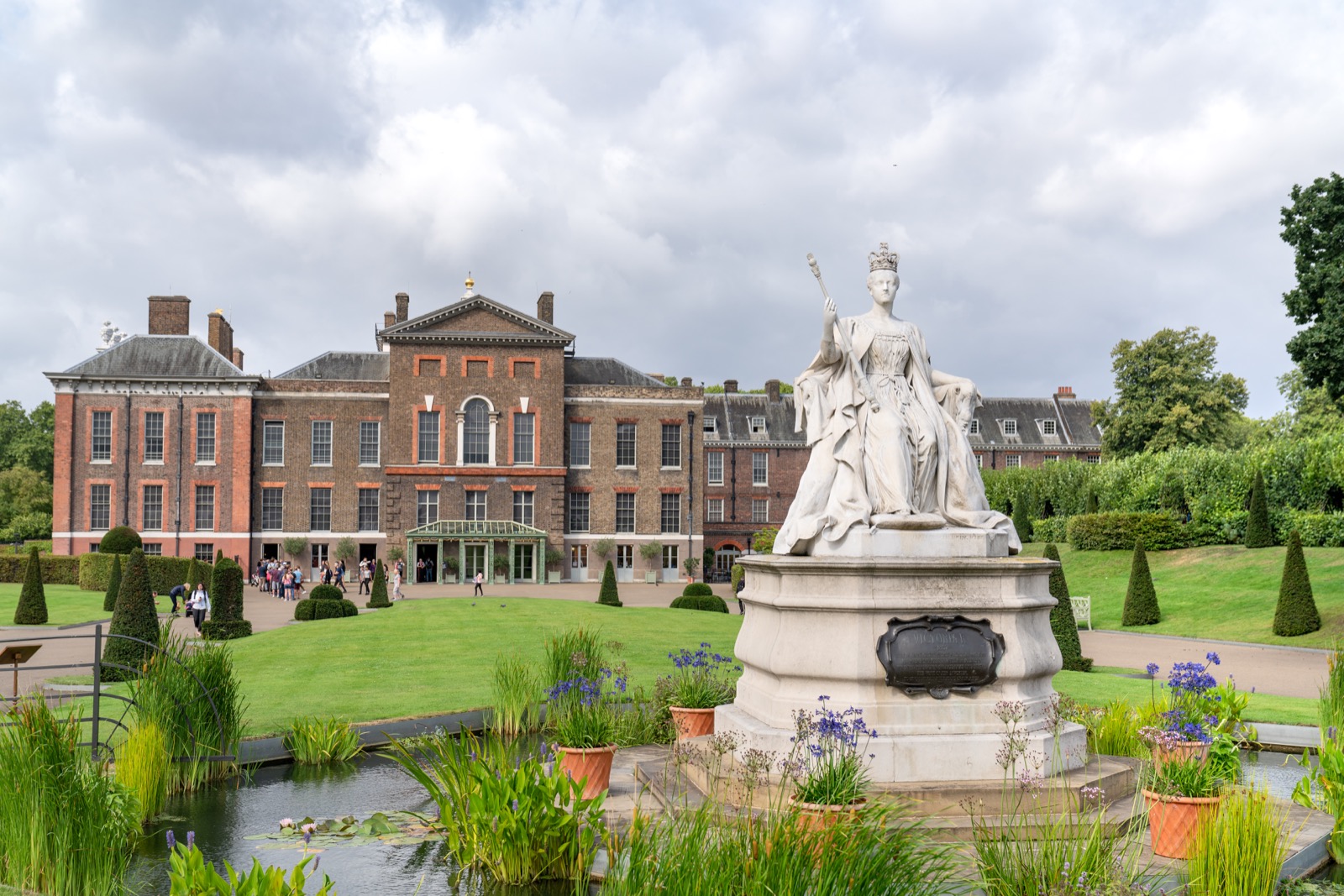
M&M’s World (Leister Square)
This is the world’s largest candy store, spread over 4 colour-filled floors. You can find dozens of types of M&Ms and merchandise. For something different, print your face on custom M&Ms. Turbopass holders receive a 15% discount on all purchases.
Twining Tea Shop & Museum
Tea aficionados will be in bliss. You’ll find every tea flavour under the sun, and probably some you’ve never heard of, let alone imagined. Dating back to 1706, this flagship store is a London institution. Try a cup of heart-warming goodness from the premium sampling bar. If all the flavours feel overwhelming, don’t worry, friendly staff will be happy to guide you.
Brick Lane
Take a walk through this gritty neighbourhood with tons of character. Admire the ever-changing street art at Allan Gardens, or take a bite at one of dozens of restaurants offering budget-friendly dishes from all corners of the planet. A few recommendations: Vegan Yes, Crosstown, and Beigel Bake. Only a few minutes' walk is the Spitalfields Market, home to a wide range of artisan products and gourmet food – a must-see on your first visit to London.

Hop On Hop Off Bus
If your feet are getting tired, hop into an open-roof bus and tour around London in comfort. The recorded commentary will fill you in on London’s most important sites. There are 3 routes with dozens of stops. Check the online map or mobile app (iOS, Android) to find the nearest stop. Free access for 24 hours is included with the Turbopass London City Card.

St Dunstan in the East Church Garden
For something a little different, check out the free gardens of this ruined church. It’s a beautiful spot for a short rest or to capture gorgeous photos.

Stonehenge
While this is not “inside” the city of London, your vacation will not be complete without a day trip to this world-renowned ancient site. There are several tour options, but I took this short half-day tour which got me back to London in time to explore more of the city at night. Don’t skip it!
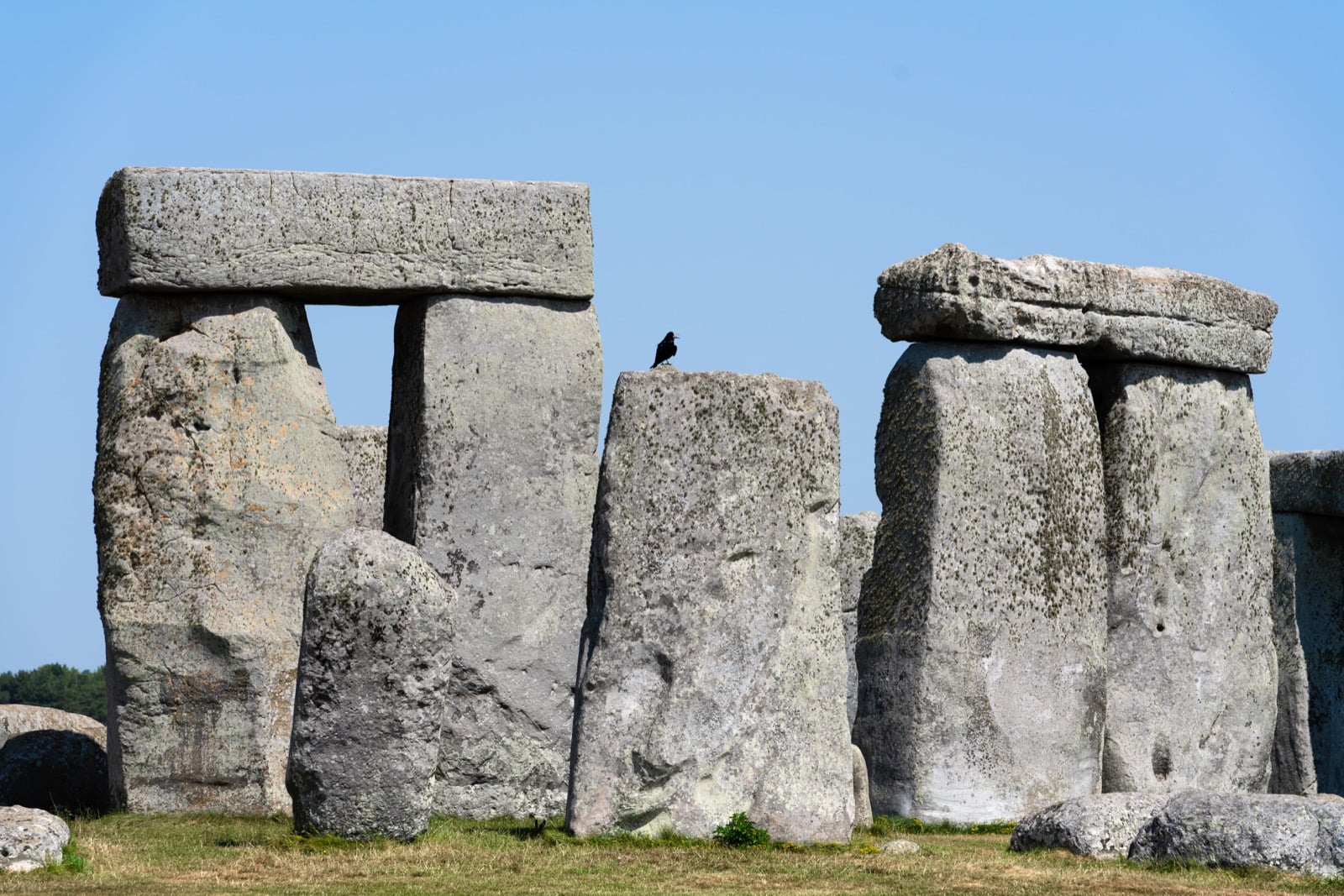
Essential Food to Try in London
British food might have a reputation for being bland and boring, but the truth is that London is one of Europe’s best cities for foodies. Hundreds of diverse cultures combine in this melting pot so you can taste all corners of the globe without straying too far.
Fish & Chips
Pre-COVID, there were 10,000 fish & chip eateries in London, so you’ll be spoilt for choice. The most famous is Poppies which has 3 locations. Save money and split one of their large dishes between 2 people. Vegans, don’t worry. You won’t miss out. Find a mouth-watering plant-based version at Vetomeato, near The British Museum.

Bangers & Mash
Sausages and mashed potato are a staple of the British diet, and are best eaten when smothered with onion gravy. Try it at Mother Mash or Makars (both have vegan options).
Meat Pie
Since the Industrial Revolution, this hand-held meal-on-the-go has become an icon. Often served with mashed potato as well for a heartier sit-down meal. Check out M.Manze who has 3 locations and offers delivery. I also found a delicious plant-based “meat” pie at Young Vegans Pie Shop.
Chicken Tikka Masala
You might be surprised to find out this is Britain's national dish. There are too many Indian restaurants in London to count, but if you’re serious about tracking down the best and don’t mind going out of the way, London’s version of “Little India” is found in Southall.
Vegan Donuts
Ok, these might not originate in London, but this is where they’ve been perfected. Crosstown has created the best vegan donuts in the world. And that’s no hype. It’s life-changing stuff. Take any non-vegan there, and they won’t tell the difference. Find a Crosstown location.

Burger
Strike two - this isn’t a British dish either, but the best vegan burger I’ve ever had was at Neat Burger Soho. So it would be a crime if I skipped it.

Beyond the actual restaurants, there are 2 districts to hunt for creative London dishes…
Camden
The entire district of Camden is vegan food heaven, but if you need somewhere to start, try Camden Market Buck Street, or my “best restaurant name” award winner, Temple of Seitan.
Borough Market
Lots of food options for lunch, and conveniently located near The Shard and Tate Modern. You’ll find an array of small eateries in an undercover area, while food trucks line the Thames. Stand-alone restaurants like Mallow tend to get pretty busy, so a reservation is recommended. If you just want to relax with a pint and a river view, try Anchor Bankside, a pub that has been in business since 1615.

Extra Tips for First-Time Visitors to London
I wish someone had shared these tips with me when I first visited London.
Fast-Paced
London can feel a bit rushed. That’s just the way it is. Walking into a tube station might seem like a competition with pedestrians zipping in and out, weaving and swerving, always appearing to be late for something important, like the White Rabbit from Alice in Wonderland. Don’t take it personally, and just go with the flow.
Stay Connected
Getting around London easily and safely requires an Internet connection. You can either pick up a local SIM from the airport or train station when you arrive, or my recommendation is to use a SIM (or eSIM) that can roam all over Europe, such as Holafly. Read my article for full details.
Navigate Like A Pro
Use the mobile app Citymapper (iOS, Android) rather than Google Maps for navigating the public transport network. The live arrival times help to avoid wasting time standing at a bus stop, when you could be enjoying another vegan donut or sightseeing. It also integrates with rideshare and e-hailing platforms – everything you need in one app.
Lots of Signs
Londoners love their signage. Most public transport stations have clear signs directing you where to go, along with major points of interest and attractions nearby. Almost every bus stop has an easy-to-follow map (in case your phone goes flat). Even the footpaths tell you which way to look when you cross the road.
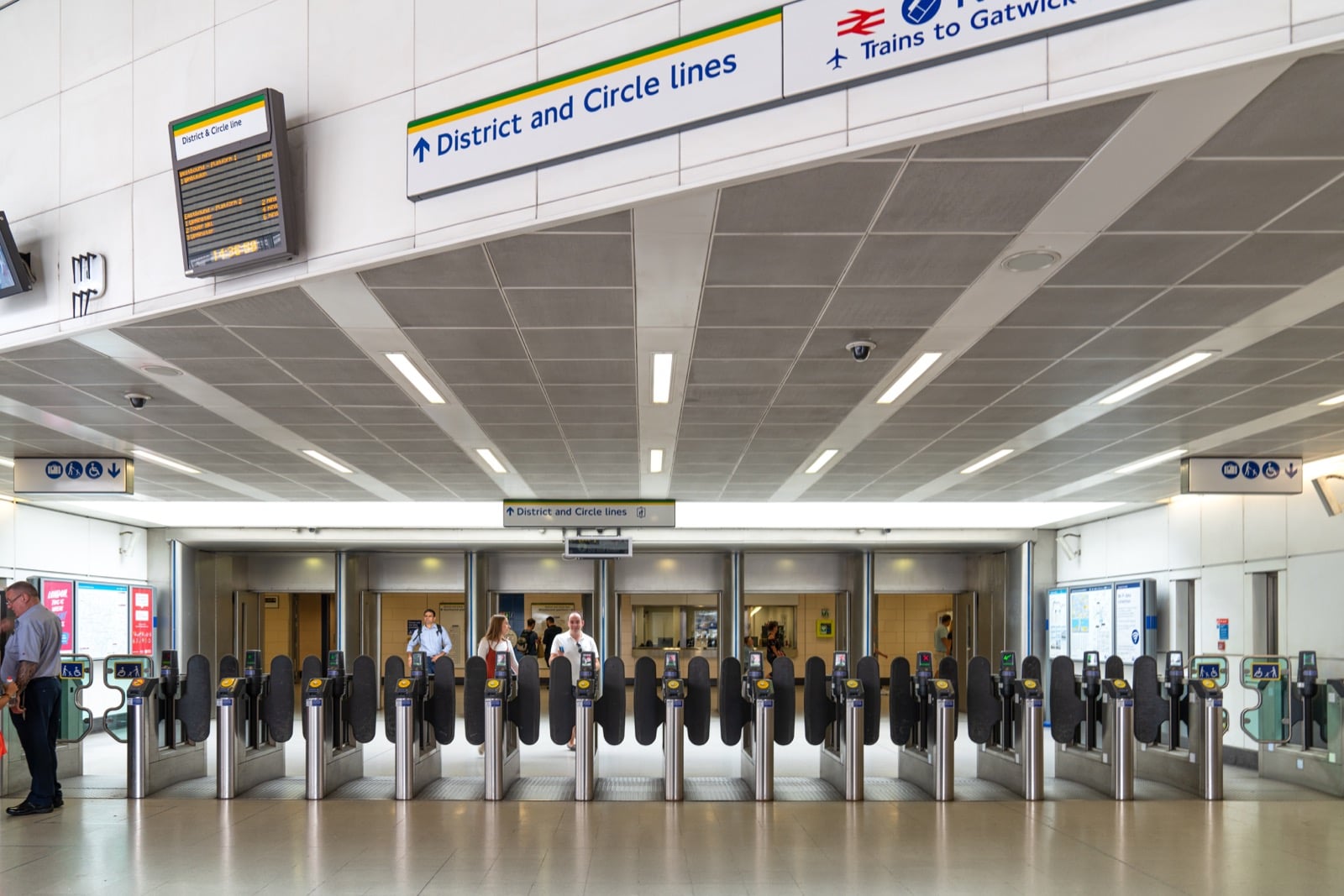
It’s a Melting Pot
People from all over the world converge in London. Don’t be surprised to hear foreign languages spoken on the street more often than English.
English isn’t English
Even if your native tongue is English (American, Canadian, Australian, New Zealander, Singaporean, Malaysian), or you consider yourself fluent, expect to be confounded occasionally by a strong accent or local slang. Here’s a list of 101 British slang words and their meanings to help you adjust.
Power Bank
Bring a power bank while sightseeing because chances are you will be out all day – and the last thing you need in a large city like London is your phone to go flat.
Seasons
Pack appropriately for your trip and check the weather in advance on Weatherspark. June to September is the ideal time to visit London, but the weather is famously unpredictable so prepare for rain either way. Summer is short in London. I’m talking about a couple of weeks, if you’re lucky. But in recent years, heat waves are becoming more common. My last visit coincided with the hottest day in England’s history.
Security
Violent crime against tourists is not common, but keep your valuables close and protected, especially on busy streets, buses, and trains. I was pick-pocketed back in 2013 on a train - my camera was stolen one day before visiting Stonehenge. Ouch!
Luggage Storage
If you have an afternoon or evening flight departing London, you might want to squeeze in a little more sightseeing. I used this convenient luggage storage solution in London, which works like a charm.
Avoid Potential Offence
Confusingly, the United Kingdom is a country of countries – England, Scotland, Wales, and Northern Ireland. Each region has a long and proud history – so accidentally calling a Welsh person English could be offensive. This 5-minute video explains the differences between the UK, Great Britain, and England.
Do Your Research
British history is long and complex. To fully appreciate the castles, museums, and tours, it helps to get up to speed with the last 1000 years or so on these islands. Check out these series, movies, and documentaries:
Netflix: The White Queen, The White Princess, The King, The Tudors, and The Crown.
YouTube: 1066 (full version), a mega YouTube video playlist of 26 vids.
I know there’s a lot, so just tackle it the same way you’d eat an elephant… one bite at a time.
Where to Stay in London
You’ll want to stay at least 5-6 days to have enough time to see all the essentials. Below is a list of popular areas for tourists, ordered with the most expensive first. The best place for you will depend on your budget and planned attractions. Unlike other cities, London does not have a single “downtown”, and attractions are spread out – so make sure you’re near a tube station.
Mayfair – home to many luxury hotels and walking distance to Buckingham Palace. There’s a reason why it’s the most expensive property on the Monopoly board.
Covent Garden – close to many popular attractions and plenty of restaurants, but quite pricey. This is the best option for first-time visitors (if you can afford it).
Leicester Square – walking distance to West End theatres, top shopping areas, and oodles of nightlife options.
Westminster – close to Houses of Parliament and Westminster Abbey, but less nightlife.
South Bank – close to Tower Bridge, The London Tower, and Borough Market. A more business-oriented vibe.
Kensington – family-friendly, close to major parks and playgrounds, plus walking distance to the Museum Mile.
Soho – best option for nightlife, with walking distance to clubs and late-night bars.
Vauxhall – cheaper option as it’s a little further out, but along the Victoria tube line for easy access to the city centre.
Dalston – no shortage of cool pubs, cafes and restaurants. This is further out but along a train line.
Shoreditch – street food and artisan markets with a gritty vibe. See London like a local.
Brixton – Your last option for “budget” accommodation. A multi-cultural melting pot located on the Victoria tube line.
That’s A Wrap!
Wow, that was big! Since you reached the bottom of this supersized article, your tenacity is proven - you’re willing to put in the effort to get to know the alluring city of London. I congratulate you.
Everything is now at your fingertips, and you’re ready for your first time visiting London. I hope it’s as special for you as it is for me.
Safe travels!











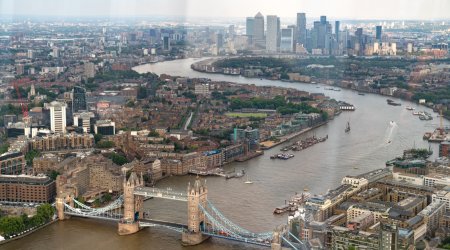
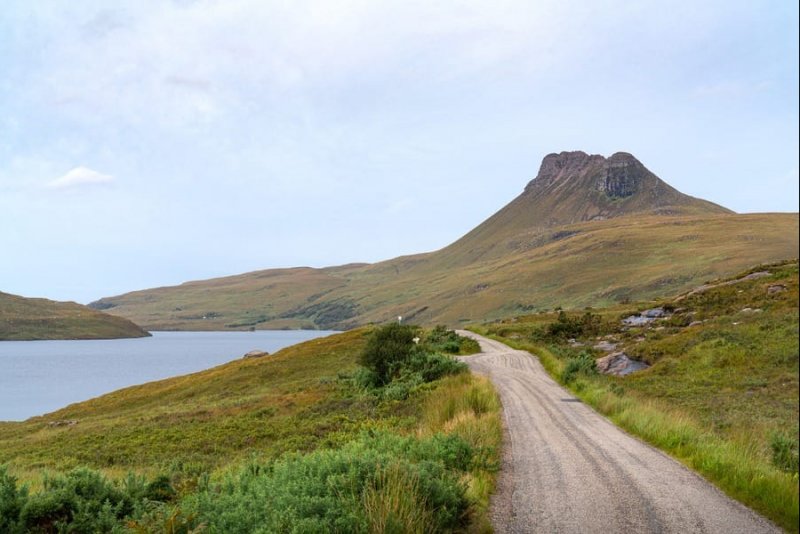











Reader Comments...
"I respond to every comment by direct private email. I look forward to your feedback" - Josh BenderLondon is one of my favorite cities in the world that I want to go threre. Thanks for sharing!
Thanks for sharing this blog, Keep it up!
Write Your Comment
Please DO NOT include links, URLs or HTML in your comments - they will be automated deleted and you will waste your time.